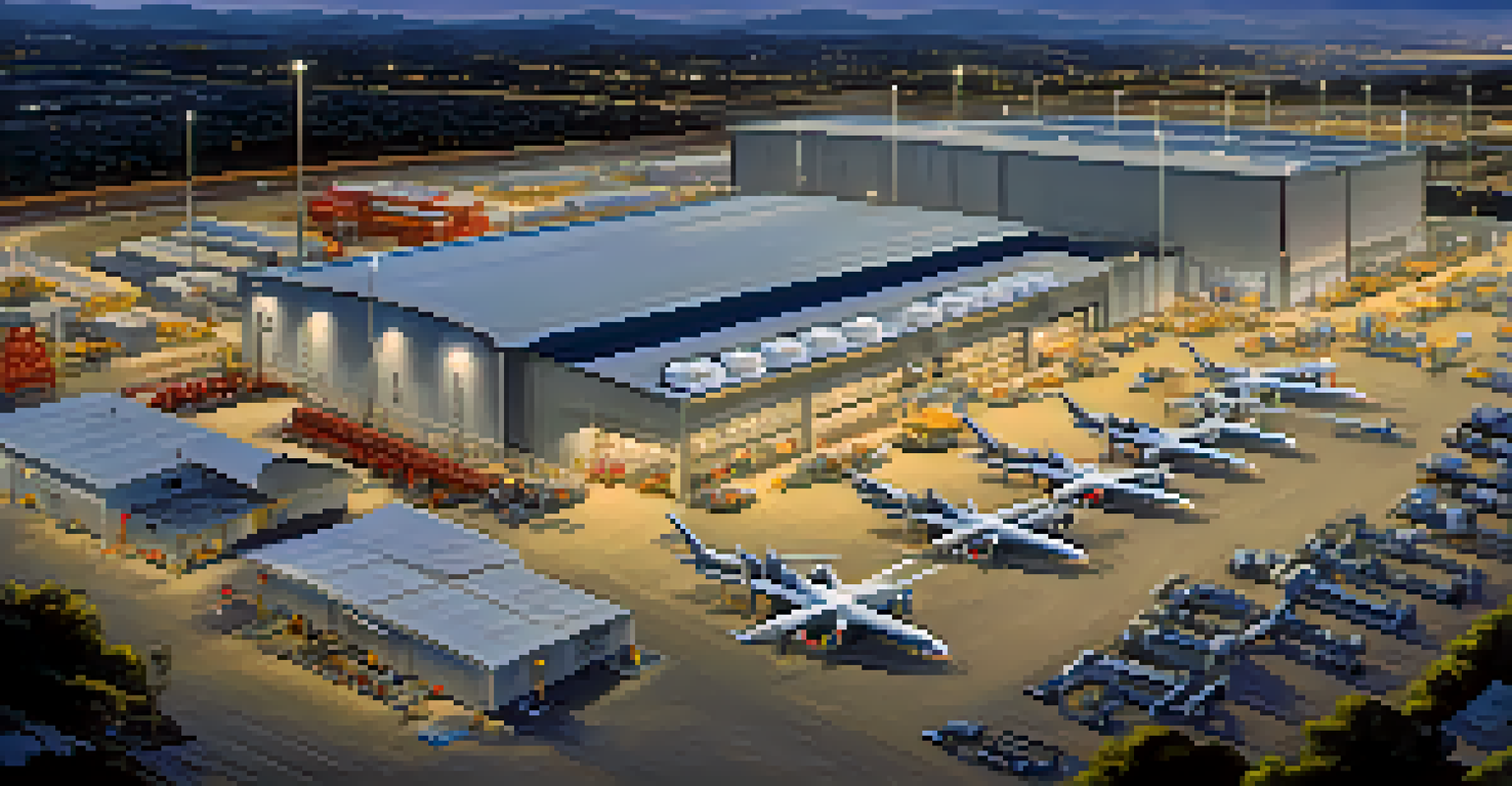San Diego's Aerospace Industry and Its Space Contributions

A Brief History of San Diego's Aerospace Sector
San Diego's aerospace industry has deep roots, dating back to the early 20th century. Initially, the city became known for its naval aviation, with the establishment of key military bases and aircraft manufacturers. Over the decades, this foundation evolved into a robust aerospace sector, attracting major companies and skilled talent from around the globe.
The future belongs to those who believe in the beauty of their dreams.
The establishment of companies like Consolidated Aircraft during World War II marked a significant turning point. This era not only boosted the local economy but also positioned San Diego as a pivotal player in the aerospace landscape. Today, the city is home to several leading aerospace firms, including Boeing and Northrop Grumman, fostering a culture of innovation.
As we look back, it’s clear that the history of San Diego’s aerospace industry is intertwined with its identity. The city's commitment to aviation has paved the way for advancements that continue to shape the future of aerospace technology, particularly in space exploration.
Major Players in San Diego's Aerospace Industry
San Diego boasts a mix of large corporations and innovative startups in the aerospace field. Companies like General Atomics and SpaceX have established a significant presence, contributing to both defense and commercial aerospace projects. This diverse ecosystem supports a wide range of activities, from satellite development to unmanned aerial systems.

These major players not only provide jobs and economic growth but also drive technological advancements. For instance, General Atomics is at the forefront of developing advanced drones that are used for both military and civilian applications. Such innovations are crucial, as they enhance operational capabilities while ensuring safety and efficiency.
Rich History of Aerospace Innovation
San Diego's aerospace sector has evolved from its early naval aviation roots into a hub of technological advancements and major companies.
Moreover, smaller startups are emerging in the San Diego area, often focusing on niche technologies or new approaches to existing challenges. This blend of large and small companies fosters a dynamic environment where creativity and collaboration thrive, ultimately benefiting the entire aerospace sector.
San Diego's Role in Space Exploration
San Diego plays a vital role in the broader context of space exploration, with several key contributions to various missions. Companies in the region have been involved in developing cutting-edge technologies that support satellite launches and deep-space missions. This involvement underscores the city's importance as a hub for aerospace innovation.
Innovation distinguishes between a leader and a follower.
For example, the development of advanced satellite systems has allowed for improved communication and navigation capabilities. These technologies are not only crucial for military purposes but also for commercial applications, such as GPS and weather forecasting. San Diego's expertise helps ensure that these systems remain at the forefront of technological advancements.
Additionally, partnerships with NASA and other governmental agencies highlight San Diego's commitment to space exploration. Local companies often collaborate on research and development projects that push the boundaries of what’s possible, ultimately contributing to humanity’s understanding of space.
Innovations Shaping the Future of Aerospace
Innovation is the heartbeat of San Diego's aerospace industry, with research and development driving new technologies. From advanced materials to autonomous systems, local companies are constantly pushing the envelope to enhance performance and efficiency. This culture of innovation is essential for maintaining a competitive edge in the rapidly evolving aerospace landscape.
One noteworthy area of focus is the development of reusable launch systems. By creating rockets that can be refurbished and launched multiple times, companies aim to reduce costs and increase access to space. This innovation has the potential to revolutionize space travel, making it more affordable and sustainable.
Diverse Ecosystem of Major Players
The region hosts a mix of large corporations and innovative startups, driving economic growth and fostering technological advancements in aerospace.
Moreover, advancements in artificial intelligence and machine learning are transforming the way aerospace companies operate. These technologies enable better data analysis, predictive maintenance, and enhanced safety measures, ultimately resulting in more efficient operations and improved outcomes for missions.
The Workforce Behind San Diego's Aerospace Success
A thriving workforce is crucial for the success of San Diego's aerospace industry. The region is home to a highly skilled talent pool, thanks in part to local universities and technical schools that focus on aerospace engineering and related fields. This educational infrastructure ensures a steady stream of qualified professionals ready to tackle the challenges of the industry.
Furthermore, companies often collaborate with academic institutions to foster research and development initiatives. Such partnerships not only enhance the quality of education but also create opportunities for students to gain hands-on experience. This approach bridges the gap between academia and industry, ensuring that graduates are well-prepared for careers in aerospace.
In addition to technical skills, fostering a culture of continuous learning and adaptability is essential. As technology evolves, the workforce must stay abreast of new developments. Many companies invest in ongoing training programs to equip their employees with the necessary skills to thrive in an ever-changing landscape.
Challenges Facing San Diego's Aerospace Industry
Like any industry, San Diego's aerospace sector faces its share of challenges. One significant issue is the ongoing competition for federal contracts, which can greatly impact the financial stability of local companies. The landscape is often competitive, with firms vying for limited funding to support their projects and innovations.
Additionally, the aerospace industry is subject to regulatory hurdles that can slow down development and increase costs. Navigating these regulations requires expertise and can be a barrier for smaller companies looking to break into the market. This underscores the importance of advocacy and collaboration to address these challenges collectively.
Future Opportunities in Space Travel
With rising interest in commercial space travel, San Diego's aerospace industry is poised for significant growth and innovation in the coming years.
Another challenge is the need for sustainable practices within the industry. As environmental concerns grow, aerospace companies are increasingly tasked with developing greener technologies. This shift not only requires innovation but also a commitment to reducing the industry's carbon footprint, ensuring a sustainable future for aerospace.
Looking Ahead: The Future of Aerospace in San Diego
The future of San Diego's aerospace industry looks promising, with ongoing investments and projects on the horizon. As companies continue to innovate and adapt, we can expect to see even more advancements in technology and capabilities. This momentum will likely position San Diego as a leader in the aerospace field for years to come.
Moreover, the increasing interest in commercial space travel presents exciting opportunities for local companies. As private entities enter the space race, San Diego's aerospace firms are well-positioned to play a crucial role in these ventures. This could lead to breakthroughs in space travel, making it more accessible for everyone.

Ultimately, the collaboration between industry, government, and academia will be key to driving the future of aerospace in San Diego. By fostering a supportive ecosystem, the region can continue to thrive and remain at the forefront of aerospace innovation, contributing to advancements that benefit not just the city but the entire world.